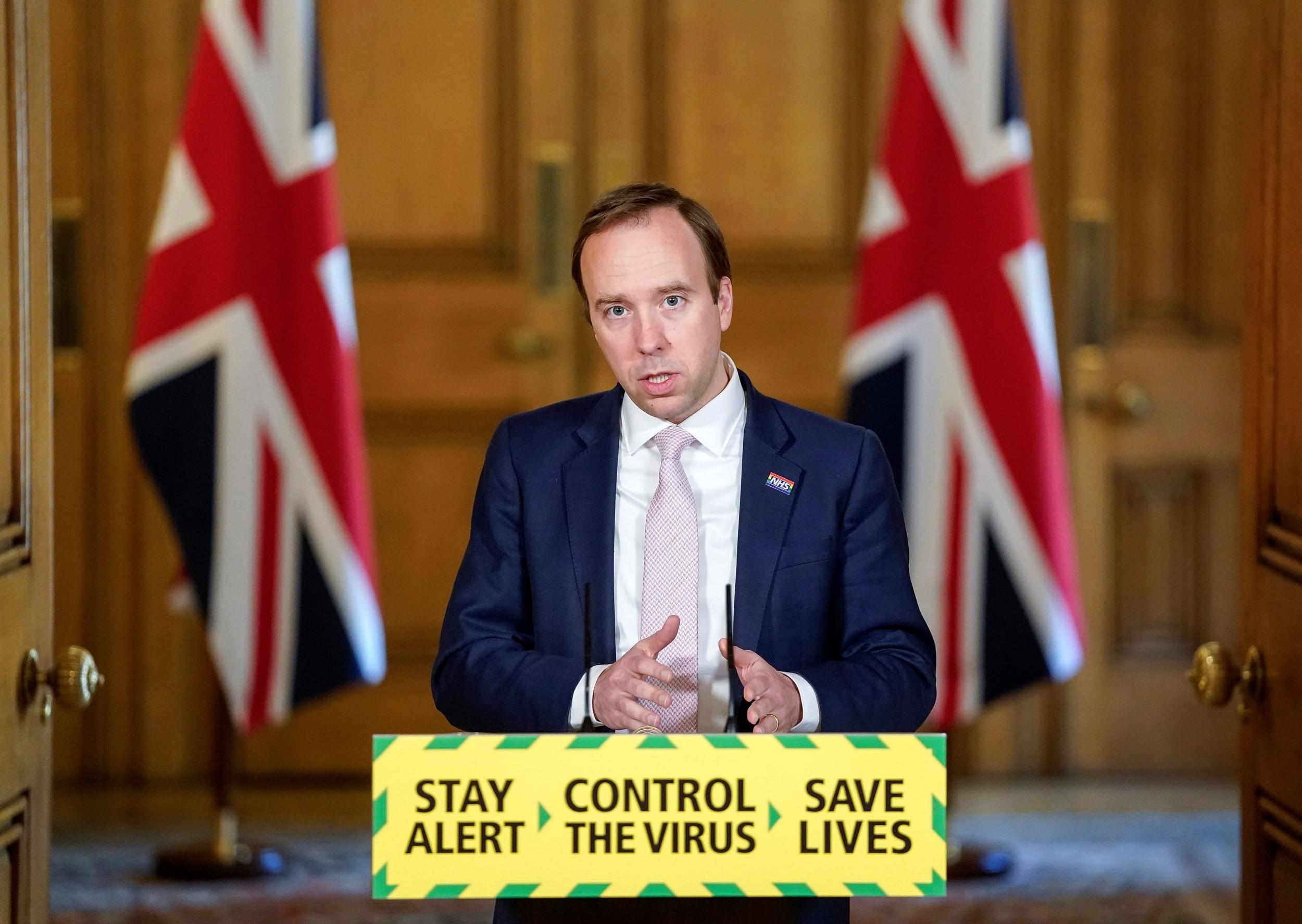The numbers game: How the government keeps moving its coronavirus goalposts
On testing and on ventilators the government is keen to claim success but this may not be the case, Jon Stone finds


One feature of the coronavirus pandemic in Britain has been the sight of the government setting itself targets, appearing to miss them and then claiming they have been met after all.
On testing and ventilators, goalposts seem to have been moved: here’s what happened.
What was the government’s target with Covid-19 testing?
Amid criticism that the UK was lagging behind other countries on coronavirus testing, the health secretary Matt Hancock said the government would carry out 100,000 tests a day by the end of April. There’s now a new target, which is to carry out 200,000 tests a day by the end of May.
Why are the numbers controversial?
The government claims the 100,000 target was met on time, but the way it counted tests for the target was the subject of controversy.
Eyebrows were raised by the fact the government counted a test as having being done if it was put in the post – either to a private home to be done there or at a “satellite centre”.
Thus, by posting 40,000 tests out to private homes and centres on the final day of the deadline, the government got over the line on time. Unsurprisingly, the number of tests fell below the target again over the following days, before creeping back up.
This was seen by many critics as moving the goalposts, and led the Royal Statistical Society to “offer constructive suggestions to improve the statistical reliability and transparency of the process”. The government was accused of counting some tests out and some tests in, as it suited.
Professor John Newton, the government’s testing tsar, told the science and technology committee on Friday that officials from Matt Hancock’s department of health had “advised” them on the right way to count the tests.
Have the problems being ironed out now?
Not exactly: while the government’s scientists initially claimed the fall-away from the target was due to the weekend, it soon became clear this isn’t the case. The government only hit its 100,000 target on six of the 17 days following the deadline. And further problems have emerged with the data.
The first is the issue of “double-counting”. The Department of Health and Public Health England have admitted that where two pieces of material are taken from the same person – such as taking saliva and nasal samples – they are counted as two tests rather than one.
So the number of tests by a normal person’s definition of a test being carried could be significantly lower. This is on top of the fact that “tests carried out” is different to the “number of people tested” – people can be tested more than once for perfectly legitimate reasons.
There is another problem: the home testing kits making up a substantial chunk of the government’s capacity have been an issue. The government and Public Health England have repeatedly been asked what the rate of people actually sending the tests back is – they have yet to give a straight and definitive answer.
Lord Bethell, a health minister, said in a written answer to a parliamentary question that “a majority” of home test kits had been returned – apparently meaning more than 50 per cent.
“The majority of home test kits are returned, and the ratio of kits being returned is on an upward trajectory,” he said in a written answer to another peer, declining to provide the requested figure.
Professor John Newton of the testing programme was again asked about the issue on Monday and gave a strikingly similar answer – which suggested above 50 per cent but didn’t go into any more detail.
“To begin with, a relatively... I think something like... certainly more than half. We would like to get that amount up,” he said. He promised to write to the committee chair about the issue.
So it is possible that as many as 50 per cent of the home tests recorded aren’t being done – and the government may not even be meeting its target on the limited set of days it claims to have achieved this. Given the reticence to shout about the real figure, it wouldn’t be too cynical to expect the return rate is at the low end of the range given.
What target did the government set itself with ventilators?
Simon Stevens, the chief executive of NHS England, spelled out the situation with ventilators at the health select committee on 17 March at the start of the crisis.
“As of today we have 6,699 adult mechanical ventilators in operation in the NHS, together with 750 paediatric mechanical ventilators which can be repurposed, an estimated 691 in the private sector and 35 in the ministry of defence. So in the round we have 8,175,” he said.
“For some weeks now we have been out preparing and procuring mechanical ventilators and can see a line of sight over the next several weeks to 3,799, bringing the total to just under 12,000.
“In addition to that, you may have seen that the prime minister hosted a call to the manufacturing sector seeking to bring new supply into the country for mechanical ventilation and we have set an open-ended goal for what that might be.”
Boris Johnson put a figure on the target in March, saying the UK needed 30,000 ventilators, but after suggestions that this might be unrealistic Matt Hancock downgraded the goal on 5 April, saying Britain would likely need around 18,000.
There isn’t necessarily anything dodgy going on here: scientists were in the early stages of assessing the disease and estimating capacity can be tricky. The health secretary, however, also said that “no number is too high” when it comes to ventilators, suggesting more would be useful.
Did the government meet its target on ventilators?
The Department of Health says the government met the target but, as with the testing issue, this claim is based on, to be polite, a very creative interpretation of the target.
Matt Hancock set the government two weeks to get hold of 18,000 ventilators, but let’s be generous and look at a set of figures dating from 6 May, a month after the target was set and more or less the peak of the crisis.
These numbers show that the NHS only had 11,900 mechanical ventilators at this time, around 7,000 machines short of what ministers said was needed.
So how can they claim they have met the target?
The Department of Health says the target was met because Matt Hancock wasn’t just talking about mechanical ventilators but also “non-invasive” ventilation-using masks. The department says that the target was met if you include these other types of ventilators.
This, again, seems to be a serious case of moving the goalposts: up until it was pointed out that the target had not been met, every politician or senior official who has talked about ventilators has used figures for mechanical ventilators. This includes Matt Hancock in his 5 April interview when he was specifically talking about the 18,000 target.
When asked, the department of health was unable to produce any evidence that this wider definition hadn’t just been adopted after the fact in order to meet the target.
A spokesperson pointed out that Mr Hancock had just used the word “ventilators” – but in medicine this is usually interchangeable with mechanical ventilators. In fact, the figures for mechanical ventilators were first produced by the department in response to a parliamentary question asking about just “ventilators”.
Join our commenting forum
Join thought-provoking conversations, follow other Independent readers and see their replies
Comments